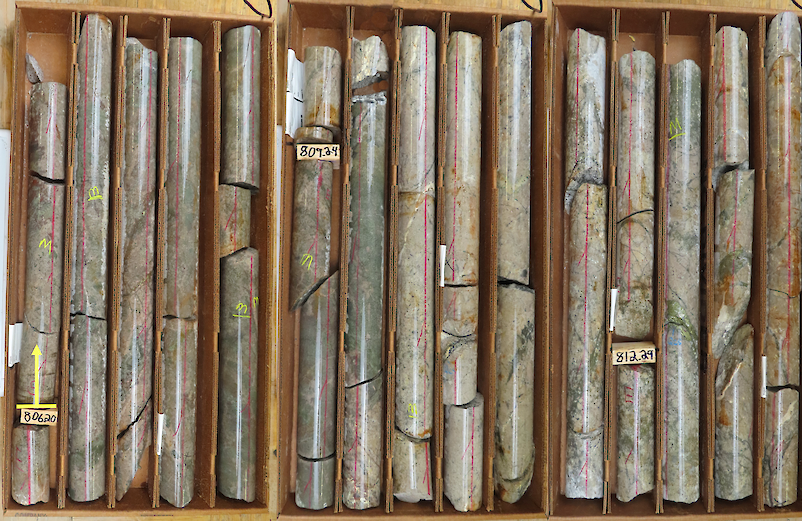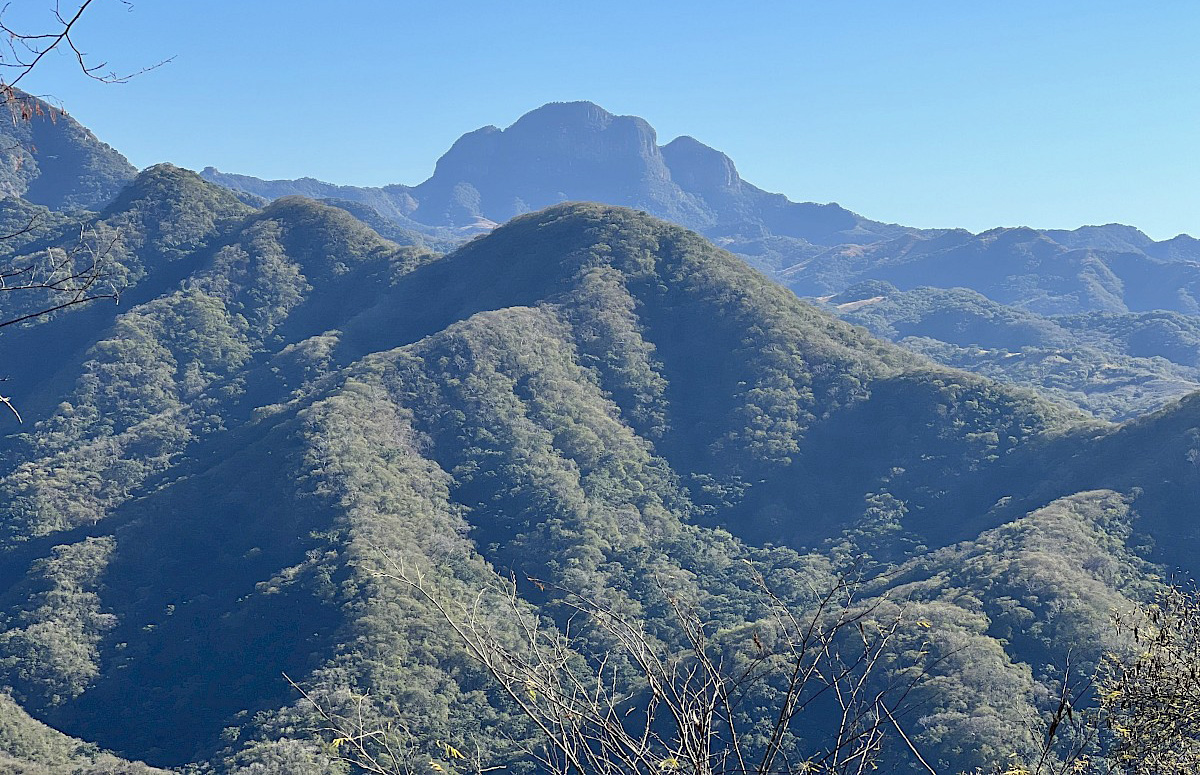TICKERS: AMM, AGC, , , EMX, EST, LUN, NEV, NEM, , , REN, SIM
Mickey Fulp: What Is Gold Actually Worth?
Interview
Source: Tim McLaughlin and Karen Roche of The Gold Report (4/28/10)
 "If we have a robust gold price, we are going to have a robust junior-stock market," asserts Mickey Fulp, "The Mercenary Geologist." In this exclusive interview with The Gold Report, Mickey explains that gold evaluations may not be reflected in prices. You'll also learn that he is more bullish on a select group of companies rather than on the sector as a whole.
"If we have a robust gold price, we are going to have a robust junior-stock market," asserts Mickey Fulp, "The Mercenary Geologist." In this exclusive interview with The Gold Report, Mickey explains that gold evaluations may not be reflected in prices. You'll also learn that he is more bullish on a select group of companies rather than on the sector as a whole.
Mickey Fulp: We spoke very early in January about 2009, which was arguably one of the best years ever for the junior resource sector. I felt it was undetermined at that time if there was still upside within the junior resource market or not.
The benchmark for the junior resource sector is the Toronto Venture Index. That's up 7% since the beginning of this year. We have a very strong chart since mid-December 2008, which was the five-year low. It's been a steady march up, but we're still 50% off the high from April of '07 of 3,362. The Venture Index is about 1,650 right now. What that tells me is that as a whole, the junior resource sector is still struggling, but good companies within the 1,750 juniors on the exchange are prospering. Lots of bad companies have been left behind in the run-up. Plus we've had this Goldman Sachs/SEC debacle going on the last couple of days. Everybody knows this is just the tip of the iceberg. In the major markets, I think there are questions as to how this will play out in the short- to mid-term. Within the junior resource sector, if we pick good companies we still have upside as long as the gold price stays high. Of the 10 companies that I have covered for at least 12 months, all have at least doubled at some point within that 12-month period.
TGR: Last January (interview), when we talked about what happened in 2009, you said you didn't see many undervalued junior resource companies at that time. Has anything changed in the interim?
MF: I don't think there are many undervalued companies. Let's take the gold business specifically, because the Toronto Venture market for the most part tracks the price of gold. If we have a robust gold price, we're going to have a robust junior stock market. They're not one-to-one correlative, but this market is driven by the gold price. If you look at valuations now, they're at an all-time high. Recent week-to-week evaluations are $85 to $90 per ounce for in-situ gold resources. I should point out that I'm talking about advanced explorers, because that's what I generally cover. I think that the best returns can be made in the stock market with advance explorers; not particularly with grassroots explorers unless they're prospect generators, and certainly not with small or mid-tier miners, which are what we find on the Toronto Stock Exchange. Peer evaluations are at an all-time high.
You can make the case that with gold trading at a relatively narrow 10% range this year of 1,055 to 1,155, the market has performed better than gold has, up 7% on the index. As an analyst, I often use 10% of gold's worth as a fair valuation for gold exploration companies. Notice I am saying, "what gold is worth," not "what the gold price is," because that is dependent on the U.S. dollar. When the U.S. dollar is strong, the gold price generally suffers. Gold is at an all-time high in euros. I'm sure you've noticed that the Canadian dollar is on par with the U.S. dollar now. So let's go back to the question: what is gold actually worth? Following Paul Van Eeden's logic, we look at the gold price in U.S. dollars compared to the monetary supply. With the inflation of gold being new gold mined, and the inflation of the dollar being the increase in monetary supply, you come out with a fair price of what gold is worth of about $850 in U.S. dollars. The other $200 or $300 that gold is trading above $850 is pure speculation. Based on about 10% of what gold is worth, $85 to $90 per ounce in the ground is probably what companies should be valued at. So I look for gold companies that currently are undervalued compared to their peers and have chosen to cover a couple of those since we last talked.
TGR: Can you share those?
MF: You bet. A company that is severely undervalued would be Amarillo Gold Corp. (TSX.V:AGC), with two advanced projects in Brazil. They currently are drilling at Lavras do Sul to develop a qualified resource, and have a scoping study and metallurgical results coming out on the Mara Rosa deposit, which has about 1.2 million ounces of gold in all categories. If you do a strict in-situ valuation on Mara Rosa, it comes out to be $22 per ounce of gold in the ground compared to the average peer valuation of $85 to $90. Another undervalued company that I covered recently is Otis Gold Corp. (TSX.V:OOO;OTCBB:OGLDF) with a $13 million market cap. They have the Kilgore project, an advanced play in east central Idaho in a 75% joint venture (JV) with Bayswater Uranium (TSX.V:BYU). Bayswater is moving strictly into the uranium sector, so perhaps we may see a deal where Otis acquires 100% of that property. Considering their portion of the 43-101 resources in the Kilgore project, the company is severely undervalued with respect to its peers.
TGR: That's just of the portion that they own at the Kilgore project?
MF: That's correct.
TGR: If they acquire the remaining portion of the Kilgore project from Bayswater, would they be even more severely undervalued?
MF: Yes, they would, although the valuation would likely increase if that happened. What we're playing with Otis Gold is the exploration potential at Kilgore. They will be drilling 7,000 to 8,000 meters starting in June to firm up and expand the resource at Kilgore. The powers that be see an exploration potential of about a million ounces. It has room to grow and if it does, Otis Gold shareholders should be highly rewarded. We're looking at mid-to-late summer for significant material news on Otis Gold. I covered this stock at $.50 and it's still trading at about $.50. I see upside. It's a play your readers might want to consider.
TGR: Any others?
MF: Eurasian Minerals Inc. (TSX.V:EMX) is exploring again in Haiti, having moved all operations to northern Haiti. They will be drilling in late May. The rumor on the streets is that joint venture partner Newmont Mining Corp. (NYSE:NEM) is extremely happy with what the companies are finding in Haiti. I think we can expect some good news coming out of Haiti in the remainder of 2010. I cover and I like Animas Resources (TSX.V:ANI). They have been knocked down pretty hard lately and their share price is trading near yearly lows. Animas is drilling now at Santa Gertrudis in Mexico. They've recently announced a JV with Nevada Sunrise Gold Corp.(TSX.V:NEV) on two Nevada properties, the Golden Arrow and Kinsley Mountain projects. The geologist that will be running those projects is Dr. Odin Christensen, an ex-Newmont vice-president of exploration, whom I think we spoke of last fall.
These two plays look like they have significant exploration upside. Golden Arrow is in central Nevada and is a Round Mountain-type play, and Kinsley is in eastern Nevada. Coincidentally, I first visited Kinsley in 1978 and recommended it to the company I was working for, but they turned me down. It has since produced around 135,000 ounces of gold. What intrigues me about Kinsley is the geologic setting: it looks very much like AuEx Ventures, Inc. (TSX:XAU)'s Long Canyon discovery. It's never been drilled deep and I'm quite bullish on the play.
I'm also fond of Pediment Gold Corp. (TSX:PEZ;OTCBB:PEZGF;FSE:P5E). They've been knocked down to a base price of about $1.40 to $1.50. They will be kicking off an 11,000- meter drill program at San Antonio within the next month or so to increase resources. This is a company with two flagship properties, the other one being at La Colorada near Hermosillo. It's a mine that has historically produced nearly 4 million ounces of gold and has current resources of about 1.2 million ounces. A gold processing plant is on site and they're currently doing on evaluation on it. Pediment has recently added to their staff as they are transitioning from an exploration company to a development company and have hired people that can take them into development and production.
A company that I am a founding shareholder of is Sierra Minerals Inc. (TSX:SIM), which recently announced a reverse takeover (RTO) with privately held Gold Group Mining. Sierra is now a company that can build a mid-tier Mexican mining company. The current producing mine is Cerro Colorado. It just announced record quarterly production of about 6,400 ounces, projecting around 25,000-plus ounces of production this year. The company is now debt free and will be merging fairly soon with Gold Group Mining. They have the Cerro Colorado mine in production and have a high-grade underground resource at San Jose De Gracia in Sinaloa. They also have a 43-101 qualified resource at the El Porvenir high sulfidation play in Central Mexico. However, the real flagship property is going to be Caballo Blanco, another high-sulfidation gold system in Veracruz province that is a joint venture with Almaden Minerals Co. (NYSE:AAU;TSX:AMM). There is a resource and untested targets on that. I'm bullish on the Sierra Minerals and Gold Group Mining combination.
TGF: Would you give us more information on Gold Group Mining?
MF: Gold Group Mining has some of the same management team that has been running Sierra Minerals. Gold Group has raised a significant amount of money in its private history and advanced two projects: San Jose De Gracia and El Porvenir. They did a deal with Lundin Mining Corp. (TSX:LUN) in the late fall for Caballo Blanco, which has significant upside potential for adding ounces. For a period of time, Gold Group Mining has been trying to put together the proper vehicle with which to go public and Sierra Minerals fits right into that. You're basically rolling two companies that have some common interests and management, as well as shareholders, into a single entity. The new company will be called Gold Group Mining.
TGR: The currently public Sierra Minerals is acquiring Gold Group Mining and is switching to the Gold Group Mining name?
MF: It's a reverse takeover. Gold Group Mining is basically acquiring Sierra Minerals as its public vehicle. Sierra is a small Mexican mining company, and now with this merger we can foresee the creation of a mid-tier mining company.
TGR: So has this reverse merger been priced into the stock?
MF: Yes, it has. There will be a rollback of Sierra Minerals on a per-share basis. With the pre-IPO financing of Gold Group Mining, the company will come out of the chute fairly valued for both groups of shareholders. With respect to the upside in the immediate term, I don't really know what speculators may or may not do. But certainly you can play the new entity as a small producer growing into a mid-tier Mexican mining company.
TGR: Are there any other companies that you can share with us?
MF: I like Canadian Shield Resources Ltd. (TSX.V:EXP), a company of which I am a shareholder but not covering at this time. It's a company with new management and seven Peruvian-based exploration projects. Two of those projects have historic resources that should be qualified in the near future. The company is pursuing opportunities to vend those seven projects to joint venture partners. It will become a Peruvian prospect generator with a significant reconnaissance database developed by some very astute geologists, including the new CEO of Canadian Shield. I think that the exploration potential in southern Peru is very good and has been overlooked. The mines that have been found and put into production during the 15-year-plus history of junior exploration in Peru have been concentrated mainly in northern Peru, and to a lesser extent in central Peru. Southern Peru remains relatively underexplored.
TGR: You mentioned earlier on in our conversation that we're not quite up to the TSX highs of 2007, although some companies have reached their former highs. Would you explain why some of these companies are getting knocked down while the TSX is increasing?
MF: In Animas' case it was directly due to negative drill results during the last program at Santa Gertrudis. They are back drilling now on additional targets. What excites me about Animas is not only are they still committed to the Santa Gertrudis district, but now they're branching out to a couple of really nice plays in Nevada. Pediment is a company that trades up and down on news and it's a somewhat cyclical stock. I initiated coverage at $.80, it went to $1.98, and it has retreated to the $1.40 to $1.50 range. I expect it to have a stronger valuation in the short- to mid-term.
TGR: We were also talking about looking at undervalued stocks and you eloquently explained how you look at the worth of gold in contrast to its trading price, that being $850 to $900. Do you see other undervalued sectors that you look at and think, "Boy, the market just hasn't gotten this yet?"
MF: The only sector that I think is absolutely undervalued as a whole is uranium. It certainly has been beaten to a pulp with the 2006 boom and 2007 bust and I think that segues into what we'll talk about next in The Energy Report.
TGR: We look forward to that discussion. Thank you for your time.
The Mercenary Geologist, Michael S. "Mickey" Fulp is a Certified Professional Geologist with a bachelor's degree in Earth Sciences with honors from the University of Tulsa (1975), and a master's degree in Geology from the University of New Mexico (1982). He has over 30 years' experience as an exploration geologist searching for economic deposits of base and precious metals and other resources. Mickey has worked for junior explorers, major mining companies, private firms and investors as a consulting economic geologist for the past 22 years, specializing in geological mapping, property evaluation and business development. Respected throughout the mining and exploration community due to his ongoing work as an analyst, writer and speaker, Mickey launched MercenaryGeologist.com in late April 2008 and can be reached at [email protected].
Want to read more exclusive Gold Report interviews like this? Sign up for our free e-newsletter, and you'll learn when new articles have been published. To see a list of recent interviews with industry analysts and commentators, visit our Expert Insights page.
DISCLOSURE: 1) Tim McLaughlin of The Gold Report conducted this interview. He personally and/or his family own shares of the following companies mentioned in this interview: None
2) The following companies mentioned in the interview are sponsors of The Gold Report: Otis Gold Corp., Animas Resources, AuEx Ventures Inc., Pediment Gold Corp. and Canadian Shield Resources Ltd.
3) Mickey Fulp: I personally and/or my family own shares of the following companies mentioned in this interview: Amarillo Gold, Animas Resources, Canadian Shield Resources, Eurasian Minerals, Otis Gold, Pediment Gold and Sierra Minerals.
I personally and/or my family are paid by the following companies: Amarillo Gold, Eurasian Minerals, Otis Gold and Pediment Gold are paying sponsors of my website. I have done consulting work in the past for Canadian Shield Resources, Sierra Minerals and Gold Group.



































